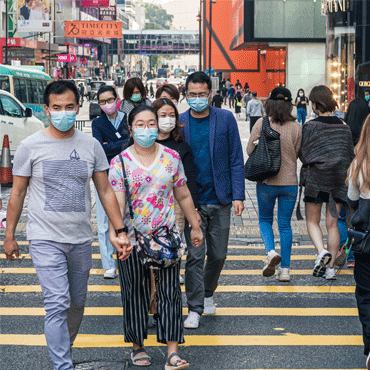China’s economy is moving back on track, says Prysmian Group China CEO Bavaresco

Most of Prysmian’s 1,500 employees in China had returned to work in mid-March, and production is back to normal, says China CEO Matteo Bavaresco. Re-opening was managed according to rigorous guidelines from local authorities and close coordination with Milan headquarters and HSE. The government’s plans to focus its investment firepower on next-generation networks and on expanding 5G applications bodes well for a telecoms sector recovery.
Getting China’s engine up and running again
As China gradually returns to normal after the outbreak of Covid-19, the government’s announcement it will focus its investments on next-generation networks and on expanding 5G applications will help the telecoms sector to recover, according to Prysmian Group China CEO Matteo Bavaresco.
China Premier Li Keqiang China Premier outlined the country’s economic plans in a speech to the 13th National People's Congress (NPC) on May 22, which include massive spending on infrastructure to restart a stalled economy.
“Priority will be given to new infrastructure and new urbanization initiatives and major projects, which not only boost consumption and benefit the people, but also facilitate structural adjustments and enhance the sustainability of growth,” said Li. “Specifically, efforts will be made mainly in the following three areas: First, we will step up the construction of new types of infrastructure. We will develop next-generation information networks and expand 5G applications. We will build more charging facilities and promote wider use of new-energy automobiles."
The coronavirus lockdown forced China’s government to hit the pause button on the timetable for 5G rollout earlier this year, putting tenders briefly on hold. Then in March, China Mobile awarded 37.1 billion yuan ($5.2 billion) in 5G contracts, with virtually all the work going to Huawei and smaller rival ZTE, setting what was perceived in the industry as a benchmark price.
These signals that China has now stepped on the gas again on its ambitious 5G plan is important for the sector’s recovery, says Bavaresco, who oversees Prysmian Group’s seven factories, three commercial branches and 1,500 employees in China. These networks have a strong demand for cables.

“Our factories have all reopened, and the situation has improved dramatically,” Bavaresco said. “The engine of China’s economy has restarted running again. And the government has implemented policies to stimulate consumption, and lending. It is spending on telecoms, but also all heavy infrastructure, speeding up existing projects and approving a series of new ones. So the Chinese engine is pushing to help the system get up to speed.”
Matteo Bavaresco
China CEO
Prysmian’s factories in China went into lockdown on January 24, giving the Group its first look at how to handle a production halt and manage a re-opening, which began on February 17 and gradually continued until mid-March. China’s lockdown was complicated by the fact that millions of people had travelled to other regions to visit their home towns during the New Year’s holiday. Despite the unprecedented emergency, confusion was kept to the minimum. The Chinese government began issuing procedures for reopening factories starting just three days after lockdown began, said Bavaresco.
“I don’t want to say the situation was uncertain, because we had the support of the government and our headquarters. But we were the first to face this situation, without any time to prepare,” he recalls. “We were really helped by HSE, which gave us guidelines, which we matched with government guidelines. And this worked very well. We’ve had a positive escalation of people coming back to work.”
The local authorities worked closely with industries. Before re-opening, factories were audited by government inspectors to ensure complete safety. To re-open, a plant must pass the test. Prysmian Group has had no registered Covid-19 cases among its China employees.
“I’m glad to say we passed with flying colors,” says Bavaresco. “One of our first actions was to donate cables to a Wuhan hospital.”
Some of these procedures, of course, would be familiar to Prysmian blue collar workers around the world – masks, self-certification, twice-daily temperature checks, and social distancing. No congregating around the water cooler, and no cafeteria. Workers had to collect their meals from the cafeteria and eat them at their workplace. Office meetings were limited to no more than 5 people and could not be held in windowless rooms.
China’s re-opening was different from the West, of course, because companies there were ordered to use cellular phone data to trace staff movements. China’s three mobile phone service providers supplied employers with mapping data, enabling companies to divide staff into high-risk and lower risk groups depending on where they had been recently. Low-risk staffers were the first to come back. Human resources managed this data with support from IT.
“I must recognize it was very useful and very effective. We were able to understand where the employees were, measure the risks, and manage the inflow,” he said. “To guarantee the minimum of risk, you have to be able to measure it.”







